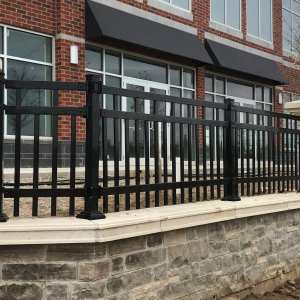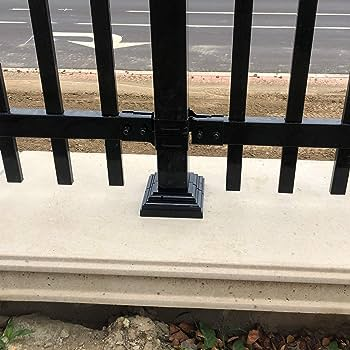The Essential Role of Base Cover Plates in Railing Systems
Railing systems play a crucial role in providing safety and aesthetic appeal to various structures, including staircases, balconies, decks, and terraces. While railings serve as protective barriers, their components also contribute to the overall appearance and functionality of a space. One often overlooked but essential element of a railing system is the base cover plate.
What Is a Base Cover Plate?
 A base cover plate, sometimes referred to as a cover flange, is a component used in railing systems to conceal and protect the base plate of the vertical posts or stanchions. These cover plates are typically made from materials such as stainless steel, aluminum, or other corrosion-resistant metals. They are designed to be visually appealing while providing a protective barrier against environmental elements.
A base cover plate, sometimes referred to as a cover flange, is a component used in railing systems to conceal and protect the base plate of the vertical posts or stanchions. These cover plates are typically made from materials such as stainless steel, aluminum, or other corrosion-resistant metals. They are designed to be visually appealing while providing a protective barrier against environmental elements.
The Significance of Base Cover Plates
1. Aesthetic Enhancement:
One of the primary roles of base cover plates is to enhance the overall aesthetics of a railing system. They provide a clean, finished look by concealing the unsightly anchor bolts and the base of the posts. This contributes to a polished and sophisticated appearance, especially in architectural settings where design matters.

2. Protection Against Corrosion:
Railing systems are often exposed to various weather conditions, which can lead to corrosion over time. Base cover plates act as a protective shield, preventing moisture, dirt, and other contaminants from infiltrating the base of the posts. This protection helps extend the lifespan of the railing system.
3. Easy Maintenance:
The installation of base cover plates makes maintenance more manageable. Cleaning and upkeep become less time-consuming, as the plates shield the vulnerable areas of the railing from accumulating debris and grime. This, in turn, reduces the need for frequent maintenance and repairs.
4. Enhanced Safety:
While base cover plates primarily serve aesthetic and protective purposes, they can also contribute to safety. Concealing anchor bolts and sharp edges on the base of posts minimizes the risk of accidents, especially in high-traffic areas.
5. Versatile Design Options:
Base cover plates come in a variety of designs, finishes, and sizes, allowing architects and designers to choose options that complement the overall style of the space. Whether the design calls for a sleek and modern appearance or a more traditional look, there are base cover plates to match.
Installation and Maintenance
Installing base cover plates in a railing system is a relatively straightforward process, typically involving the use of screws or fasteners. Regular inspections and cleaning are essential to ensure their continued functionality and aesthetic appeal. Depending on the environmental conditions, it may be necessary to replace base cover plates periodically to maintain their protective properties.
Base cover plates are often the unsung heroes of railing systems, playing a vital role in enhancing aesthetics, protecting against corrosion, and contributing to safety. Their unassuming presence conceals and safeguards the base of posts while adding a touch of elegance to the overall design. Architects, designers, and property owners should consider the significance of base cover plates when planning and maintaining their railing systems, as these small yet essential components can make a significant difference in the long-term functionality and appearance of the structure.

 +86 159 6420 9667
+86 159 6420 9667  sales@haxrailing.com
sales@haxrailing.com 



